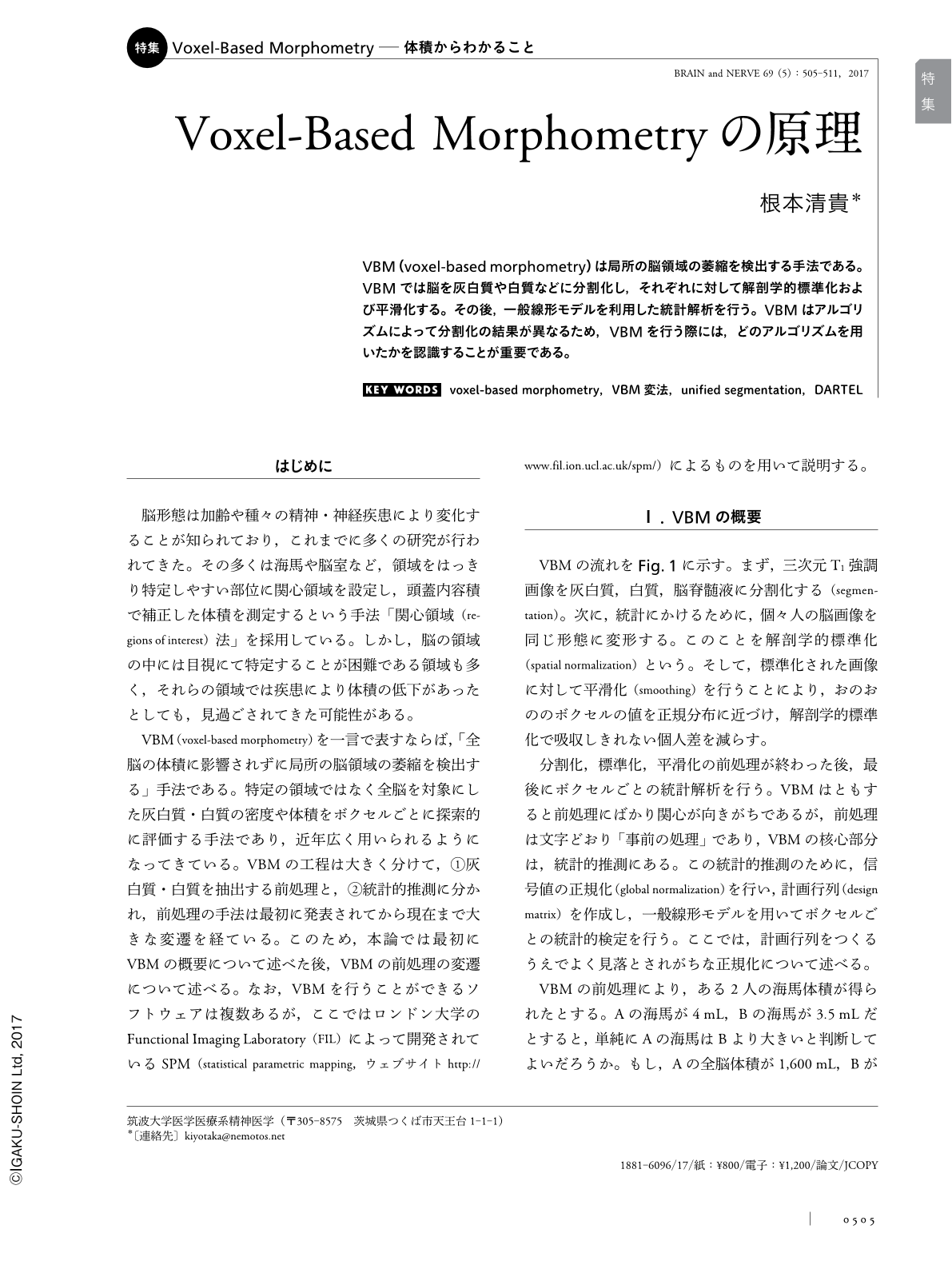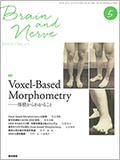Japanese
English
- 有料閲覧
- Abstract 文献概要
- 1ページ目 Look Inside
- 参考文献 Reference
VBM(voxel-based morphometry)は局所の脳領域の萎縮を検出する手法である。VBMでは脳を灰白質や白質などに分割化し,それぞれに対して解剖学的標準化および平滑化する。その後,一般線形モデルを利用した統計解析を行う。VBMはアルゴリズムによって分割化の結果が異なるため,VBMを行う際には,どのアルゴリズムを用いたかを認識することが重要である。
Abstract
Voxel-based morphometry (VBM) is a neuroimaging technique that investigates focal differences in brain anatomy. The core process of VBM is segmenting the brain into grey matter, white matter, and cerebrospinal fluid, warping the segmented images to a template space and smoothing. Thereafter, statistical analysis is performed on the basis of the general linear model. Although the basis of VBM is constant, the algorithm has been changed. Classical VBM simply employed anatomical normalization, segmentation, and smoothing. This changed to optimized VBM, which normalized the brain using parameters derived from grey matter image normalization, cleaned up non-brain tissue images, and utilized Jacobian modulation. Further, unified segmentation—a probabilistic framework that enables image registration, tissue classification, and bias correction to be combined within the same generative model—was introduced. The DARTEL algorithm then improved the accuracy of image registration. Currently, researchers can use an extension of unified segmentation with some features such as an improved registration model, extended set of tissue probability maps, or more robust initial affine registration. Those who utilize VBM must pay attention to the choice of VBM algorithm, as data interpretation differs with each algorithm.

Copyright © 2017, Igaku-Shoin Ltd. All rights reserved.


